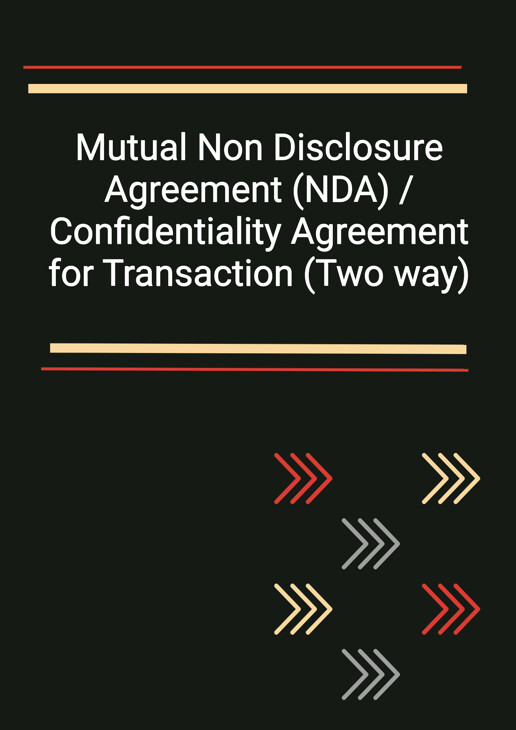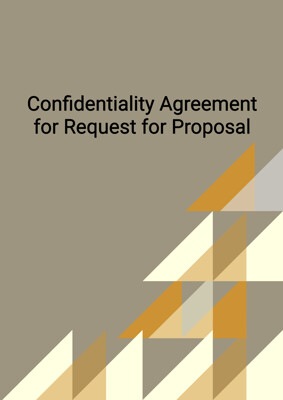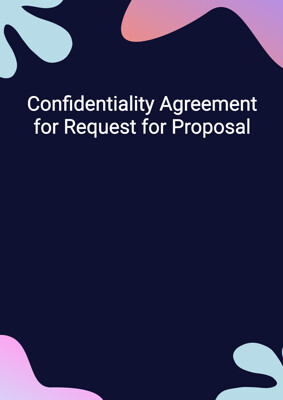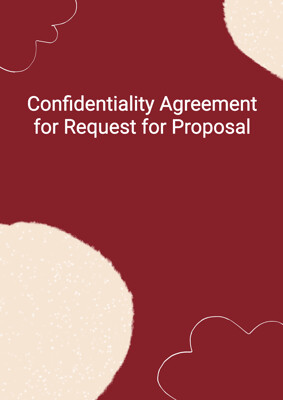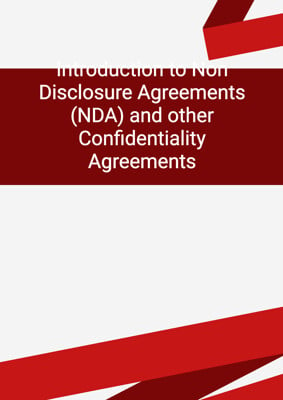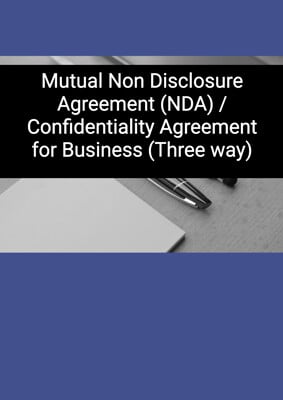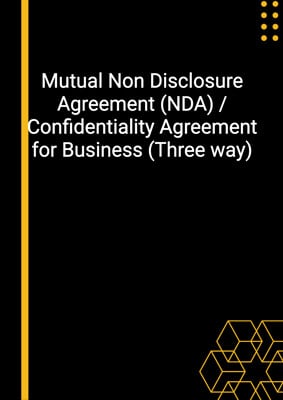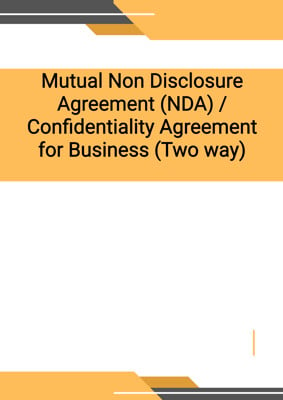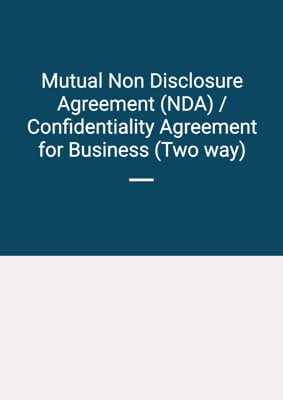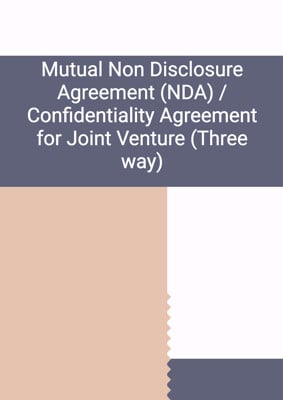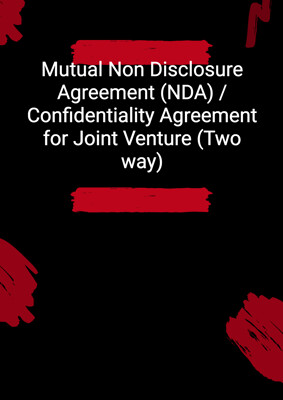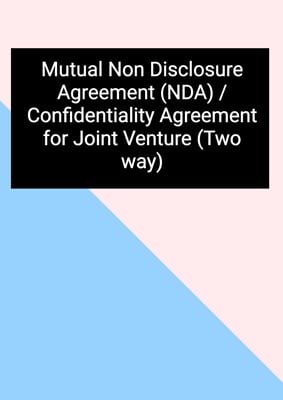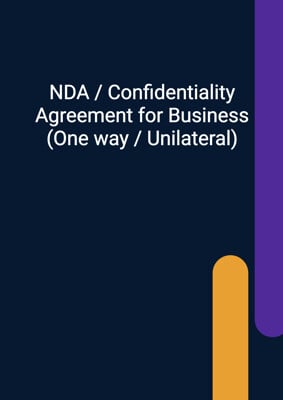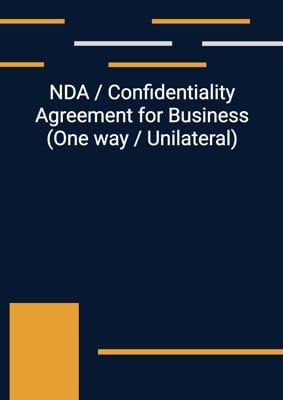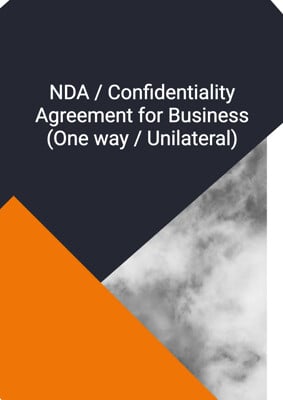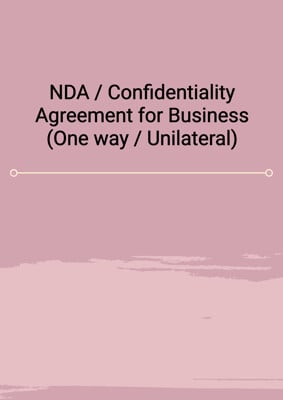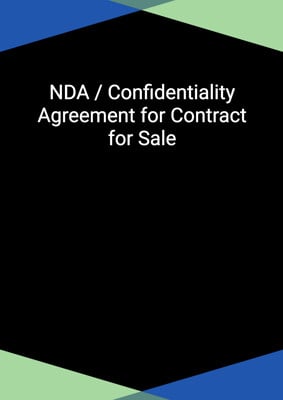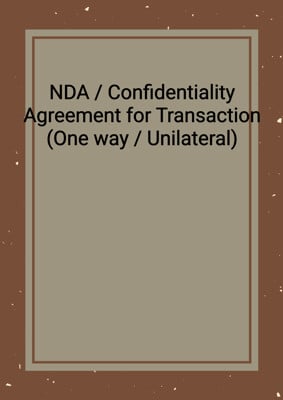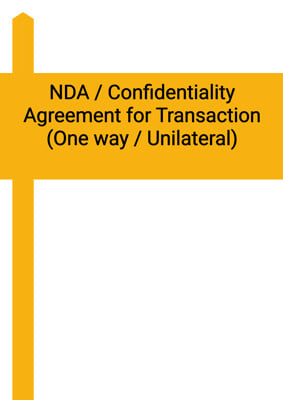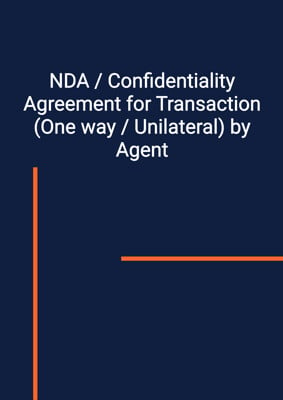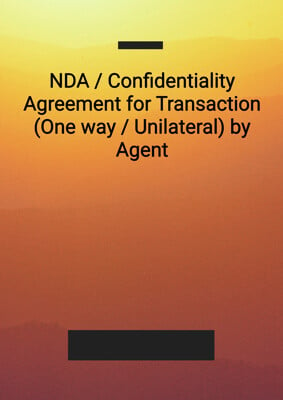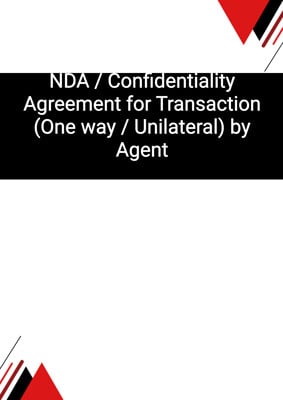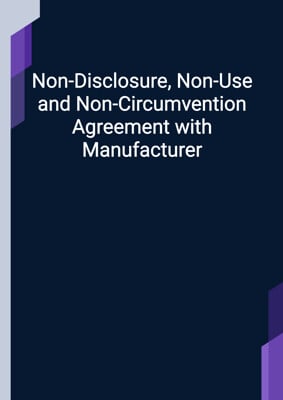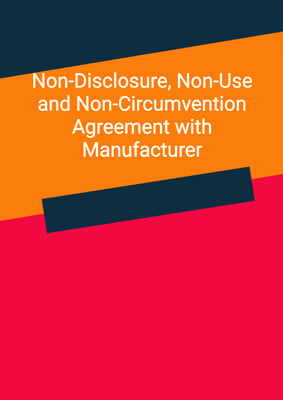How to Tailor the Document for Your Need?
01
Create Document
Fill in the details of the parties. You can click the "Fill with Member’s Information" button to complete it with information saved to your account.
02
Fill Information
Please fill in any additional information by following the step-by-step guide on the left hand side of the preview document and click the "Next" button.
03
Get Document
When you are done, click the "Get Document" button and you can download the document in Word or PDF format.
04
Review Document
Please get all parties to review the document carefully and make any final modifications to ensure that the details are correct before signing the document.
Document Preview
Document Description
The Mutual Non Disclosure Agreement (NDA) / Confidentiality Agreement for Transaction (Two way) is a document that establishes a confidential relationship between two parties involved in a transaction. The document is important as it ensures that both parties protect and maintain the confidentiality of any information shared during the transaction.
The entire document consists of several sections that outline the obligations and responsibilities of each party.
Section 1: Interpretation
This section provides definitions for key terms used throughout the agreement, such as 'connected persons' and 'information'. It ensures that both parties have a clear understanding of the terms used in the document.
Section 2: Obligations of Confidentiality
This section outlines the obligations of each party regarding the confidentiality of the information shared. It specifies that the information should only be used for the purpose of evaluating the transaction and should not be disclosed to any unauthorized parties.
Section 3: Confidentiality Measures
This section details the measures that each party should take to maintain the confidentiality of the disclosed information. It includes restrictions on copying, reproducing, and storing the information in an externally accessible system.
Section 4: Excepted Information
This section specifies the circumstances under which the obligations of confidentiality do not apply. It includes situations where the information is publicly available or previously known to the receiving party.
Section 5: Return of Information
This section outlines the process for returning or destroying the information after the completion of the transaction. It ensures that both parties remove any copies or notes containing the information.
Section 6: Disclaimer and Warranty
This section clarifies that the information provided in the document is not exhaustive and that no representation or warranty is made regarding its accuracy or completeness. It also states that neither party nor their connected persons will be liable for any use of the information.
Section 7: Confidentiality
This section emphasizes the confidentiality of the agreement itself and restricts the parties from making any announcements or circulars without the approval of both parties. It also allows for contact with existing customers and suppliers in the ordinary course of business.
Section 8: Remedies
This section acknowledges that a breach of the agreement could cause irreparable harm and allows for remedies such as injunction and specific performance.
Section 9: Waiver
This section clarifies that a waiver of a breach of the agreement does not constitute a waiver of any other or further breach. It also states that the rights, powers, and remedies provided in the agreement are cumulative and not exclusive.
Section 10: Assignment
This section prohibits the assignment of rights or obligations under the agreement by either party.
Section 11: Entire Agreement
This section confirms that the agreement represents the entire understanding between the parties regarding the subject matter.
Section 12: No License
This section clarifies that the agreement does not grant any rights to either party under any intellectual property of the other party.
Section 13: Governing Law and Jurisdiction
This section specifies the governing law and jurisdiction for any disputes arising from the agreement.
Section 14: Notices and Service
This section outlines the methods and timings for serving notices between the parties.
Section 15: No Rights under Contracts for Third Parties
This section states that third parties have no rights to enforce the terms of the agreement.
Overall, the Mutual Non Disclosure Agreement (NDA) / Confidentiality Agreement for Transaction (Two way) is a comprehensive document that ensures the confidentiality of information shared between parties involved in a transaction. It covers various aspects of confidentiality, obligations, and remedies in case of breach.
How to use this document?
To use the Mutual Non Disclosure Agreement (NDA) / Confidentiality Agreement for Transaction (Two way), follow these steps:
1. Interpretation:
- Familiarize yourself with the definitions provided in Section 1 of the agreement to understand the key terms used throughout the document.
2. Obligations of Confidentiality:
- Understand and agree to the obligations outlined in Section 2, which include maintaining the confidentiality of the information and using it exclusively for the purpose of evaluating the transaction.
3. Confidentiality Measures:
- Implement the confidentiality measures described in Section 3, such as restricting access to the information to approved representatives and applying appropriate security measures.
4. Excepted Information:
- Determine if any information falls under the exceptions outlined in Section 4, which include publicly available information or information previously known to the receiving party.
5. Return of Information:
- Comply with the requirements in Section 5 regarding the return or destruction of the information after the completion of the transaction.
6. Disclaimer and Warranty:
- Acknowledge the disclaimer and warranty stated in Section 6, which clarifies that no liability is assumed for the accuracy or completeness of the information.
7. Confidentiality:
- Maintain the confidentiality of the agreement itself as specified in Section 7 and seek approval from both parties for any announcements or circulars related to the agreement.
8. Remedies:
- Understand the remedies available in case of a breach of the agreement, as outlined in Section 8, including injunction and specific performance.
9. Waiver:
- Be aware that a waiver of a breach of the agreement does not waive any other or further breaches, as stated in Section 9.
10. Assignment:
- Note that neither party can assign their rights or obligations under the agreement, as stated in Section 10.
11. Entire Agreement:
- Recognize that the agreement represents the entire understanding between the parties, as stated in Section 11.
12. No License:
- Understand that the agreement does not grant any rights to the intellectual property of the other party, as stated in Section 12.
13. Governing Law and Jurisdiction:
- Be aware of the governing law and jurisdiction specified in Section 13 for any disputes arising from the agreement.
14. Notices and Service:
- Follow the guidelines in Section 14 for serving notices between the parties.
15. No Rights under Contracts for Third Parties:
- Understand that third parties have no rights to enforce the terms of the agreement, as stated in Section 15.
By following these steps, you can effectively use the Mutual Non Disclosure Agreement (NDA) / Confidentiality Agreement for Transaction (Two way) to protect the confidentiality of information shared during a transaction.
Not the right document?
Don’t worry, we have thousands of documents for you to choose from:
